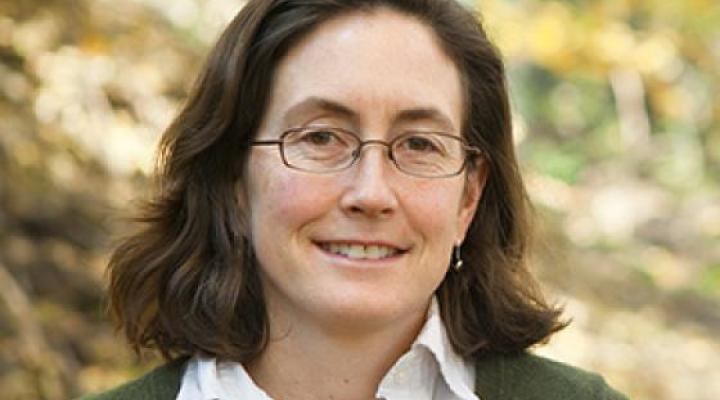“I did not grow up camping or spending a lot of time in the woods,” says Megan Holycross. “I wasn’t indoctrinated into a love of the outdoors and camping the way a lot of geologists are.” As she says this, you can tell Holycross herself is aware of the irony contained in the fact that she is one of the newest faculty members of Cornell’s School of Earth and Atmospheric Sciences (EAS). Holycross joined the faculty in the summer of 2020, after spending a year at EAS as a visiting assistant professor. Before coming to Ithaca, she was a postdoctoral fellow at the National Museum of Natural History.
Perhaps not surprisingly, Holycross does most of her research in the lab. Her goal is to understand the processes that have differentiated the chemistry of earth’s solid interior. “The instruments in my lab in Snee Hall are capable of achieving temperatures and pressures that recreate the conditions up to 120 kilometers deep in the earth,” says Holycross. “I am studying what happens in the lower crust and the upper mantle of the earth.”
More specifically, Holycross uses controlled laboratory experiments to develop new geochemical tools to quantify the rates (time) and conditions (temperature, pressure, redox state) of magmatic and metamorphic processes. “The idea is that if you control all of the variables of the experiment and then you compare the outcome of the experiment to a natural rock you are then able to say something about how that rock formed and its history.”
Holycross grew up outside of Detroit, Michigan and traces her interest in geology and earth science to the national conversation around climate change spurred by the release of the 2006 documentary film An Inconvenient Truth. She was a competitive swimmer in high school and says this contributed to an interest in hydrology and wanting to understand how water interacts with rocks. Holycross went to Michigan State University and earned a B.S. in environmental geoscience.
During her undergraduate studies Holycross had a Research Experience for Undergraduates (REU) at the American Museum of Natural History in New York City. “It was outside what I was interested in as an undergrad, but at the time I thought ‘hey, it’ll be fun to spend a few months in New York City even if I don’t love the work.’ The thing is,” Holycross continues, “I really fell in love with the science. I got to work with someone who was doing what I do now—high temperature/high pressure experiments—and it changed my academic path.”
Holycross went back to Michigan State and loaded her schedule with classes that would allow her to apply for doctoral programs in experimental geochemistry. She was accepted to Rensselaer Polytechnic Institute in Troy, New York and joined the lab of Bruce Watson. “I studied the diffusion of trace elements in magmatic systems,” says Holycross. “And we used the experimental data to understand how chemical profiles in natural samples can be used to “tell time” and understand the history of that rock.”
Holycross is excited to be at Cornell for many reasons. “I think of what I do as materials science of the earth,” says Holycross. “And the fact that Cornell has such a strong materials science department means lots of possibilities for collaboration. In fact, the opportunities for collaboration across the institution are awesome. Big Picture-type of questions require interdisciplinary work and that kind of work is a real strength of Cornell. The EAS faculty are doing excellent science at such a high level and at the same time they are all very collegial and approachable. On top of that, there is the opportunity to work with bright, motivated students.”
Now that she is at Cornell, Holycross plans to continue to use high pressure/high temperature experiments to learn more about the evolution of the earth. Some of the exciting questions her work will help address are:
What are the causes and drivers of volcanic eruptions?
Why does the earth have continents and other planets don’t?
What is happening throughout the subduction cycle at plate boundaries?





